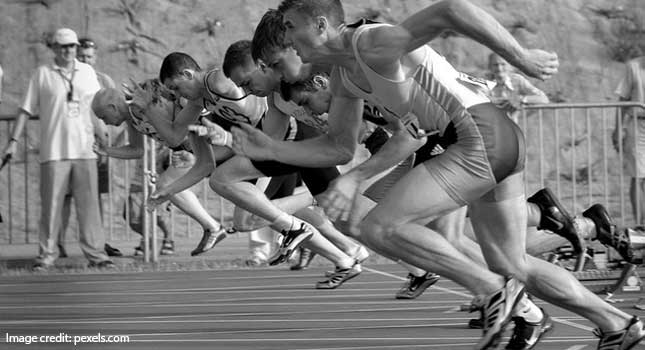A new study proves that high-intensity exercise can actually be help your brain create new cells, helping ‘rewire’ an addicted brain and aiding addiction treatment. We examine the details here.

Sharelines
- The other way of repairing the brain damage was much simpler… The mice were simply given a wheel to run on.
- New research shows exercise can double or triple the brain’s new neuron production, aiding recovery.
Addiction counsellors have long understood the powerful role that physical exercise can play in addiction treatment. And as new research continues to be published, our understanding of how physical activity benefits the brain continues to evolve.
Two very important studies were published in 2016, both of which dealt with the phenomenon of neurogenesis – the creation of new brain cells. In this post, we take a closer look at the phenomenon of neurogenesis and consider what these new findings mean for addiction recovery and mental health in general.
New Insight Into Neurogenesis
Neuroscience is still a young and developing field, and pioneering research continues to emerge. ‘Neurogenesis’ refers to the development of new neurons in the brain. Scientists have long understood that the majority of neurogenesis takes place while babies are still in the womb, but less is known about whether (and how) new neurons develop in adult brains.
For most of the 20th century, it was widely believed that the brain was a static system. Scientists understood that most – if not all – of the brain’s neurons developed before birth. Very little development was thought to occur after this.
In 1962, neurobiologist Joseph Altman found evidence of neurogenesis in adults. However, his findings were largely ignored by the scientific community until the 80s and 90s, when tests demonstrated neurogenesis in adult rats, birds and non-human primates. This was a major breakthrough at the time, and the scientific community still has much to learn regarding how neurogenesis takes place in adults.
What we know so far is that neurogenesis continues to occur in adults within three regions of the brain:
- Hippocampus (memory centre)
- Frontal lobes (executive function)
- Cerebellum (motor function)
The new neurons are from neuroblasts that are formed in the brain. Many neuroblasts end up dying off shortly after they are created, but some go on to form viable brain tissue.
Aerobic Exercise Generates New Brain Cells in Adults
Now that scientists are confident that neurogenesis does occur in adults, a great deal of research has been devoted to finding out how this occurs. Earlier this year, researchers at the University of Jyväskylä made a breakthrough with three sets of rats. Over the course of six to eight weeks, one group of rats voluntarily ran long distances on a wheel. Another group participated in high intensity training (HIT), and the third underwent resistance training. There was also a control group of sedentary rats.
After the training period, the highest concentration of new neurons was observed in the group that spent most of the time running. In fact, they had two to three times as many new neurons. The benefits to the HIT group were nominal, while no noticeable change was observed in those that took part in resistance training.
Due to the physiological similarities between rats and humans, it is reasonable to assume that correlations exist. It is interesting to note that cardiovascular workouts are clearly the most beneficial form of exercise in this regard. With that in mind, regular aerobic exercise could stimulate neurogenesis and contribute to better brain health.
Can Working Out Repair Brain Damage?
Even more recently, scientists at the University of Ottawa made another brain breakthrough. Their research was concerned with a mysterious brain chemical called VGF. The role VGF plays in brain chemistry is far from fully understood, but it is believed that one of its many functions is regulating synaptic plasticity (ie the ability of neurons to change and adapt over time).
This research focused on mice with a genetic dysfunction that inhibited motor function and usually led to premature death. This was a symptom of damage to the cerebellum. In other words, the genetic disease caused brain damage, which in turn made it more difficult for the mice to move around.
The scientists found that they could repair the mice’s genetic damage in two ways. One was by administering a concentrated dose of VGF. However, the only way to administer the dose was by exposing the mice to a virus, which means this would not be a viable strategy in human subjects.
The other way of repairing the brain damage was much simpler and completely non-invasive. The mice were simply given a wheel to run on. Aerobic exercise increased the amount of VGF in the mice’s brains, and positive changes resulted. After exercising over a period of time, the mice could move about more naturally, and their lifespans increased considerably.
Another Link between Physical Activity and a Healthy Mind
It is no secret that being active is good for the brain. Avid runners speak of a ‘runner’s high’ – a sense of euphoria experienced after an intense round of physical activity. This phenomenon is also accompanied by reduced anxiety and reduced sensitivity to pain. This has been explained in part by the increase in endorphins and opioid peptides that appear in the blood after exercise.
Newer research has also demonstrated that the brain’s endocannabinoid system (the same one affected by marijuana use) may also play a role in causing a runner’s high. What scientists continue to find is that exercise can create many of the positive effects that substance users seek – without leading to addiction or any of the negative effects associated with drugs and alcohol.
How High-Intensity Training (HIT) Speeds Up the Recovery Process
Addiction is a brain-based disorder. With substance abuse over time, the brain develops new patterns that essentially tell users it is imperative to their survival to seek out the substance again. Much of recovery involves ‘rewiring’ the brain away from these patterns. This is where physical activity comes in. High-intensity training stimulates the areas of the brain that create mood change. When incorporated correctly into an addiction treatment programme, it can help transform one’s emotional state into a positive one that lends itself to recovery. This is complemented by cognitive behavioural therapy (CBT), which provides participants with a framework for understanding addiction and their psychological relationship with it.
At The Edge, we understand the power of intensive physical training in recovery. Our programme, designed especially for young men, uses Muay Thai boxing and triathlon training as cornerstones of our treatment approach. This provides not only the physiological benefits that aid recovery, but the encouragement and self-confidence that comes with meeting challenges. Our participants find the adventure and camaraderie they seek through wilderness excursions, teambuilding and shared experience. By the time they have completed our inpatient programme, they are equipped with a new set of tools for a happier and healthier substance-free life. If you or your loved one is struggling with addiction, contact us today to learn how we can help.





